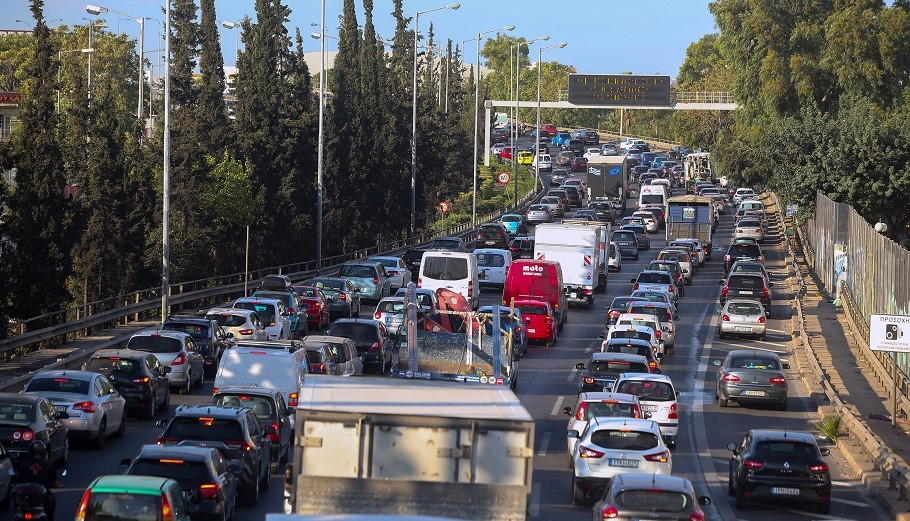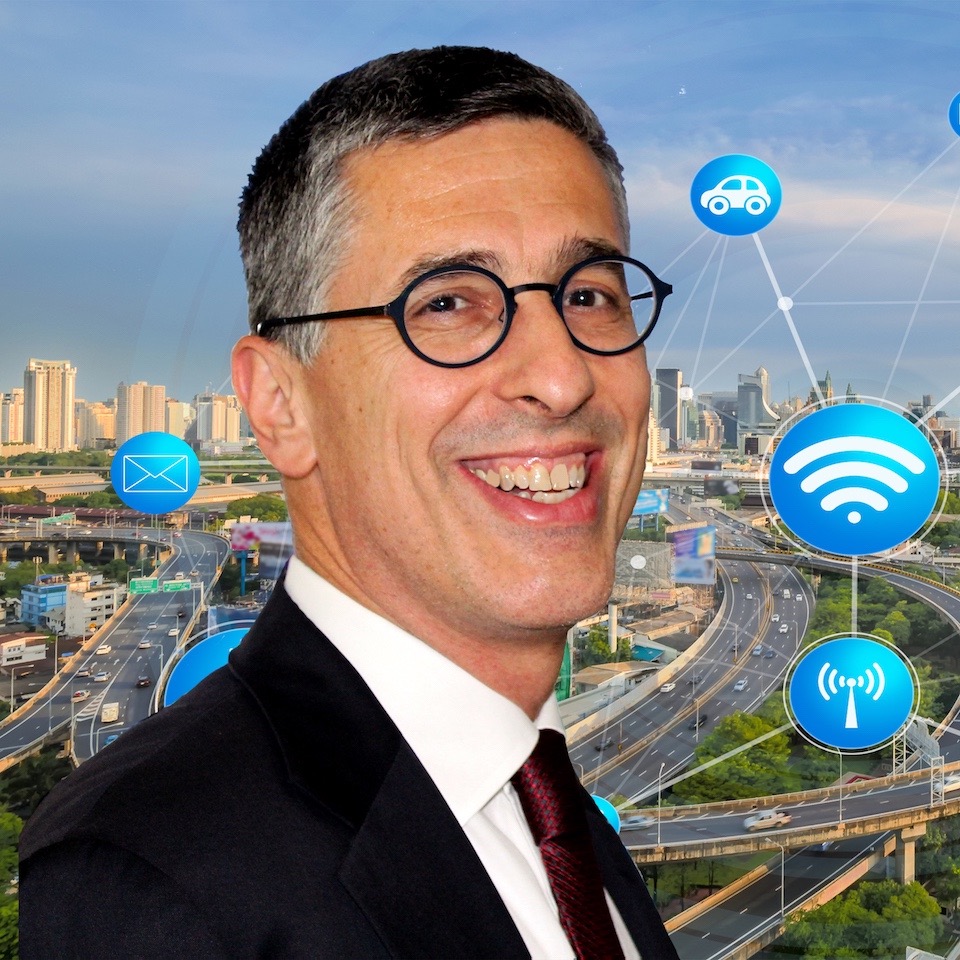The solution to the Athens traffic problems lies into Public Transport.
The great opportunity for major infrastructure projects in 2004 and the necessary traffic arrangements that would change the situation was not missed. No city in Europe has their traffic problems solved only by infrastructure projects. In cities where new infrastructure was developed, traffic congestion has also increased. We should understand that the more space we give to cars, the more space they will take up and more traffic will be induced. Therefore, as Transportation Scientists have been arguing for decades, the solution is not related to the road infrastructure. Instead, the solution lies into Public Transport.
There are two major absentees, Authorities which are not working seriously on Public Transport and passenger car drivers who do not want to leave their vehicles. As long as we continue in this direction, traffic congestion will get worse. “What will happen in Kifissos Urban Highway?” is the wrong question. The correct question is “How to serve those who have to move via Kifissos”. Like every axis similar to Kifissos throughout Europe, the urban highway will always face traffic congestion, increasingly more and more hours per day. We need to work seriously on Public Transport, it is pointed out that we need better service. The criterion is not just about having more and cleaner buses. The main criterion of commuters for choosing a transport mode is time. If we prioritise Public Transport with management measures, as they do throughout Europe, people will choose them. With the current situation, they do not prefer Public Transport because it is a slower alternative.
In the commuters complain that “busses do not serve the area I live, sometimes bus service is cancelled, sometimes there is traffic jam and the bus goes even slower”, the answer is that they are absolutely right, that is why we need better Public Transport. If priority was given strictly to bus lanes, the same buses could have made twice as many trips.
However, bus lanes have been developed, but there may not be adequate enforcement.
The two major absentees are responsible for this. On the one hand, drivers park or drive their vehicles within the bus lanes and, on the other hand, Authorities, through enforcement and cameras, do not act to the extent that they should. We continue going in the wrong direction and being absent from the fundamental problems that are actually being solved, as are faced in most European cities.
Priority should be given to Public Transport. This is the real question for Athens’ transport system, rather than what to do with traffic congestion. The majority of drivers only care about getting their vehicle from outside their house and drive quickly and park outside their job. In fact, what all drivers are seeking is for other drivers to disappear in order to get themselves to their destination more quickly. That is not going to happen. But what we can ensure is that they can move much faster on Public Transport. Systematic work is needed as it is important to understand that Public Transport commuters do not complain as much as motorists who do not want to change their habits. The media should highlight not only the problem of traffic but also the problem of commuters. This debate has been going on for decades, but the situation will only get worse and worse as long as commuters and Authorities continue to be absent.
On the ‘issue’ of Kifissos Urban Highway lanes, there are two open issues. Significant improvements can be made in Kifissos, such as stopping the variable cross-section with variable three or four lanes. There should be throughout the axis just three lanes for better flow. One reason for the congestion could possibly be due to this. We could optimize traffic if we had a constant number of lanes from north to south. The second issue refers to incidents, which are quite a few every day. Even minor and not necessarily serious incidents in Kifissos, such as a vehicle running out of petrol or a minor crash should be dealt with immediately. We know that if 10-15 minutes pass, we will have a half-hour queue, and if half an hour passes, we will have a 3-hour queue. Thus, incidents should be dealt with very quickly.
Even if there is no emergency lane in Kifissos, quick and timely response to incidents will be accomplished with more patrol cars. If one considers that Attiki Odos has a total of 110 patrol cars, while Kifissos has only 2 cranes of the Traffic Police and 2 of the Attica Region, they can understand the difference in service. Obviously, there is no emergency lane, but there are several exits where patrol cars can be parked or waiting and can be deployed much faster in case of incidents. Firstly, a comprehensive plan is required and secondly the necessary budget should accompany it. Authorities need to get serious with a professional approach, just as there is on Attiki Odos. Each of us can realise the order of magnitude. They are roughly similar traffic volumes in Attiki Odos and Kifissos and the former has dozens of patrol cars while the latter has very few. As a result, Kifissos is a forgotten axis. This however will bring temporary relief in case of an incident, in order not to have long delays. But we still know that if there is better incident management and people see that Kifissos has a better traffic flow, more and more will prefer going through this highway; it will be again congested and therefore it is a vicious circle. There are management issues to be solved, but travel demand is constantly increasing, meaning more people will always want to commute. As long as we give space to cars, the problem is not going to be solved.
With regards to whether all this different traffic volumes from Kifissos is transferred to the other roads of the Capital of Greece, it is noted that the road network is interconnected. When drivers see that one axis is doing better than the other, they prefer it, which can change during the week or month. Specifically, when drivers see that they can go faster through the side roads, they will prefer to go through the side roads, and when they see that the main axis is empty, they will use the main axis. Sometimes, drivers monitor traffic via Google, and may even change their destination path. For instance, in some cases, if they see that the road is not full of cars and there is low traffic, they will get out or go to work, while if they see that there is heavy traffic, they will not move or head back.
The Science of Transportation Engineering is quite complex and complicated and we have to trust it if we need solutions. That is why dynamic traffic management models exist, as should be the case with the traffic signal management centre of Attica. However, the appropriate emphasis is not given and Authorities not only cannot do what they should do, but cannot understand what they should do. Obviously, infrastructure for Public Transport is needed. But we are still talking about infrastructure, when with management measures we can get a much better service for travellers.
Attica needs 8 metro lines. It is not acceptable to set a 10-year timeframe for metro line 4 construction. This is not a timeframe to serve travellers but rather serving the constructors. The implementation of new and subsequent lines can be implemented faster. A high priority should be given to basic infrastructure in Public Transport and appropriate investments should be made.
Interview in Morning Stories at Parapolitika 90.1 radio station in November 2023

